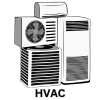Here is a detailed explanation of the types of exhaust systems used in automobiles, categorized based on design, function, and application:
In this article:
1. Single Exhaust System
Description:
A single exhaust system uses one set of exhaust components: one exhaust pipe, muffler, and catalytic converter.
Definition:
A system with one exhaust manifold, one catalytic converter, one muffler, and a single tailpipe. It handles the flow of exhaust gases through a single path.
Example:
Toyota Corolla – A typical compact car that uses a single exhaust system for its inline-4 engine.
Features:
- Common in small or economy cars with inline engines.
- Lightweight and cost-effective.
- Easier to maintain.
Pros:
- Affordable.
- Simpler design.
- Adequate for low to moderate engine power.
Cons:
- Limited flow capacity.
- Less power gain compared to dual systems.
2. Dual Exhaust System
Description:
Uses two separate exhaust paths, typically for V6, V8, or performance engines.
Definition:
This system uses two separate exhaust paths from the engine, often with two catalytic converters, two mufflers, and two tailpipes. It’s common in performance or V-configured engines.
Example:
Ford Mustang GT – Uses a true dual exhaust system with a V8 engine for enhanced power and sound.
Types:
- True Dual Exhaust: Two manifolds, two catalytic converters, two mufflers, and two tailpipes.
- Dual Exit Exhaust: One exhaust line that splits into two tailpipes (appearance and sound enhancement).
Pros:
- Improved engine breathing and performance.
- Better exhaust flow and reduced backpressure.
- Sportier sound and aesthetics.
Cons:
- Heavier and more expensive.
- Slightly reduced fuel efficiency in some cases.
3. Cat-Back Exhaust System
Description:
This system includes all components from the catalytic converter to the tailpipe (muffler, resonator, pipes).
Definition:
An aftermarket upgrade that replaces everything from the catalytic converter to the tailpipe, including the mid-pipe, resonator, and muffler.
Example:
Subaru WRX with Borla Cat-Back Exhaust – Gains more horsepower and a sportier sound while remaining emissions-compliant.
Common in:
Aftermarket performance upgrades.
Pros:
- Increases horsepower and torque.
- Louder, deeper exhaust tone.
- Usually emissions-compliant (since the catalytic converter remains intact).
Cons:
- More expensive than axle-back systems.
- May require professional installation.
4. Axle-Back Exhaust System
Description:
Replaces the exhaust components from the rear axle to the tailpipe.
Definition:
Replaces components from the rear axle to the tailpipe. It is simpler than a cat-back and mostly changes sound characteristics.
Example:
Honda Civic with Flowmaster Axle-Back Kit – Provides a deeper tone with minimal installation effort.
Common for:
Mild performance and sound upgrades.
Pros:
- Cheaper and easier to install than a cat-back.
- Minimal impact on emissions.
Cons:
- Smaller performance gains compared to cat-back or header-back systems.
5. Header-Back Exhaust System
Description:
Replaces the entire exhaust system from the exhaust manifold (headers) to the tailpipe.
Definition:
An extensive upgrade that replaces everything from the exhaust headers (manifold) to the tailpipe. Maximizes performance by removing restrictions in the entire system.
Example:
Chevrolet Camaro SS with Hooker Header-Back System – Offers increased flow, better throttle response, and higher horsepower.
Pros:
- Maximum performance upgrade.
- Frees up exhaust flow and reduces restriction.
Cons:
- Expensive.
- Complex installation; often requires professional help.
- May affect emissions compliance.
6. Opposite Dual Exhaust System
Description:
Similar to dual exhaust but with pipes exiting on opposite sides of the vehicle’s rear.
Definition:
A dual exhaust setup where tailpipes exit on opposite sides of the vehicle’s rear. It’s usually done for aesthetics and balanced sound.
Example:
Dodge Charger R/T – Features factory opposite dual exhausts exiting symmetrically on either side of the bumper.
Pros:
- Balanced aesthetics and sound.
- Improved flow and cooling effect.
Cons:
- Requires more space under the vehicle.
- More weight and cost.
7. Performance Exhaust System (Aftermarket)
Definition:
A general term for aftermarket exhaust systems designed to improve power, reduce weight, and enhance sound. Often includes high-flow catalytic converters, performance mufflers, and mandrel-bent pipes.
Example:
BMW M3 with Akrapovič Titanium Performance Exhaust – Reduces weight and boosts performance with premium materials.
Includes:
- High-flow catalytic converters.
- Performance mufflers.
- Mandrel-bent pipes for smooth airflow.
Pros:
- Enhanced horsepower and torque.
- Aggressive sound and visual upgrades.
- Customization options.
Cons:
- Might not meet emissions laws.
- Warranty issues if not dealer-approved.
8. Turbo-Back Exhaust System
Description:
Used in turbocharged vehicles, this system replaces all exhaust components from the turbocharger outlet to the tailpipe.
Definition:
Found in turbocharged vehicles, it replaces the entire exhaust system from the turbocharger outlet to the tailpipe. It reduces backpressure and improves turbo efficiency.
Example:
Volkswagen Golf GTI with Cobb Turbo-Back Exhaust – Increases turbo response and horsepower but may require ECU tuning.
Pros:
- Maximum power increase for turbo vehicles.
- Allows faster turbo spool-up due to less backpressure.
Cons:
- Not street-legal in some areas.
- May require engine retuning.
Summary Table:
| Type | Performance Gain | Legal for Road Use | Cost | Complexity |
|---|---|---|---|---|
| Single Exhaust | Low | Yes | Low | Low |
| Dual Exhaust | Moderate | Yes | Medium | Medium |
| Cat-Back | Moderate-High | Usually | Medium | Medium |
| Axle-Back | Low-Moderate | Yes | Low | Low |
| Header-Back | High | Depends | High | High |
| Turbo-Back | High | Not Always | High | High |
| Performance (Custom) | Varies | Varies | Varies | Medium |
Other courses:



